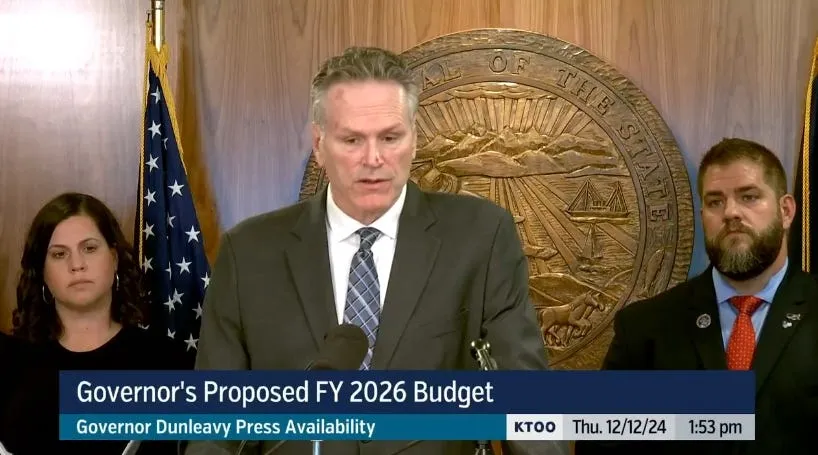Hospital capacity matters but fewer covid-19 cases would be even better
Ask not what Alaska's hospitals can do to meet the covid-19 surge, ask what we can do to reduce the covid-19 surge that's straining Alaska's hospitals.

Good afternoon, Alaska! This year’s third special session has entered its final full week… and it sure doesn’t look like much of anything is coming together quickly.
In this edition: Alaska continues to hit record hospitalizations, so are a handful of changes that make it easier for hospitals to hire workers from Outside going to solve things? The governor thinks so. Also redistricting and the reading list.
A band-aid for a crisis
Since last week’s impactful House Health and Social Services Committee on the state of Alaska’s health care system (find the recap in the last newsletter), the question that has really stuck with me is not what Alaska’s health care system needs to handle the surge in cases but what we’ll do about the surge in cases that is straining Alaska’s health care system. The answer, so far, has been not much. On the local and statewide level, Republican officials have been wary about implementing any new disaster declarations or public health mandates as they enter a high-stakes election year despite increasing calls to do anything about the largely unchecked surge of the highly contagious Delta variant. Even urging people to get vaccinated has proved to be a bridge too far for folks like Anchorage Mayor Dave Bronson or Gov. Mike Dunleavy, whose tepid calls for vaccinations are all followed by an “if you want to” and at worst with counterproductive comparisons to North Korea and Nazi Germany.
So now, as Alaska’s hospital system is reporting yet another new record in hospitalizations today with a whopping 186 covid-19-related hospitalizations (that’s 1 in 5), Dunleavy is pushing for a legislative solution with fewer than 10 days left on the special session agenda. One of those bills—opening Alaska’s doors to a permanent interstate nursing compact—was already spiked by the Senate Health and Social Services Committee earlier this year, raising some eyebrows about how serious the administration really is about offering meaningful solutions. The other piece of legislation, Senate Bill 3006, was heard in the Senate Labor and Commerce Committee today. It would do the following:
- Allow the Division of Insurance to waive utilization review requirements, which the state says would allow for faster discharge of patients.
- Allows telehealth providers from Outside to work in Alaska through July 1, 2022 without first obtaining an Alaska license or conducting an in-person physical exam.
- Suspends the background checks for employees of hospitals and nursing homes through July 1, 2022. It’d expect hospitals to conduct the check themselves.
- Allows Health and Social Services Commissioner Adam Crum to “waive any state law or regulation” if they would get in the way of the above items.
An official testifying to the Senate Labor and Commerce Committee today said that the goal with the measures is to “enhance the state’s effort to slow the spread of covid-19.” What was notably lacking in the explanation from either the state or in questions from the legislators is just what beefing up hospital capacity—assuming there’s the workers available—will do to help slow the spread of covid-19. The closest we heard to that was when Crum said loosening the background check requirement would speed up hiring for hospitals, eliminating a roughly 14-day waiting period, and free up seven employees to work on other issues. Telehealth measures would reduce the need for those first-time, in-person consults… and that’s about it.
And, sure, the state’s efforts to combat the covid-19 pandemic aren’t limited to this bill, but left largely unanswered is what—if anything—the state’s going to do to go after the underlying cause of the state’s strained health care system: Covid-19.
The message from the health care providers and groups last week was pretty clear: Mask up and get vaccinated. The best way to treat cases, they said, was to not get covid-19 in the first place. Alaska Native Medical Center Administrator Dr. Bob Onders was one of the more outspoken testifiers to the House Health and Social Services Committee last week, reiterating the need for vaccinations and indoor masking mandates. He argued that they helped limit the spread of covid-19 in the Anchorage area and it should reimplemented, warning that the measures alone wouldn’t address the underlying problem.”
“I’m concerned that if people think that alone will provide an immediate solution, I would caution them. There is a very limited number (of hospital workers), even with a streamlined process, nationally to get staffing here," he said. “I’m not sure that that solution will be as robust as we need. The prevention of infection is even more critical. ... Public indoor masking is key component of that that could mitigate spread.”
Until something is done to reduce the spread—continued vaccinations, mandates for masking in public spaces or elected officials taking the difficult stance of not playing to the base for once—Alaska still faces an uncertain road ahead that will only ensure this pandemic lasts that much longer.
The enemy of the perfect
The Alaska Redistricting Board is continuing its series of hearings that include work sessions to draw new election district maps. Just what is coming out of these hearings is a story for a less busy day where I can devote several hours to listening/watching board members stumble their way through redistricting software, but I did want to highlight a particularly interesting takeaway from the opening of this morning’s hearings.
The Alaska Constitution mandates four things when new districts are drawn: That they’re compact, they’re contiguous, they’re socio-economically integrated and “as near as practicable” be of equal population. Setting the politics of redistricting aside, Peter Torkelson laid out the push-pull of the situation:
“What we've learned is that sometimes these constitutional factors are in tension. It could be called a dynamic tension where they could collide. You want ideal population but in the process compactness suffers or you want compact but socio-economic doesn't seem to make sense,” he said. “Only the board can decide how to balance these dynamic tensions and factors as we move forward.”

He cautioned the board from focusing too much on the one category that has a clear definition.
“Of the four criteria there is only one that is actually measurable. And that's the population so it becomes natural to just work on getting the numbers right. It becomes a block-picking game where we try and combine to get the right number,” he said. “It's easy to think about that and to lose sight of the bigger focus.”
In today’s hearing, he highlighted an anonymously proposed plan where the deviation from the ideally sized districts was at 0.63%, which Torkelson said was “probably the tightest deviation that’s technically possible.” But said before you get too excited about it, it’s critical to understand the kinds of trade-offs the plan makes: Like drawing Cordova into a South Anchorage district and pairing the northern Juneau district in with Kenny Lake.

Reading list
- School districts have figured out one weird trick to help keep covid-19 out of the schools. From Alaska Public Media: Mass testing can keep COVID out of schools. But none of Alaska’s largest districts are doing it.
- In an ominous headline, Idaho hospitals are starting to ration care. From the Associated Press: Idaho hospitals begin rationing health care amid COVID surge
- Far-right folks are seeing an opportunity to rewrite the state’s constitution on the back of the PFD. (Rep. Eastman explicitly said as much on the House floor last week following the budget vote.) From the ADN: Supporters of a big PFD are starting to back a constitutional convention. Alaska’s conservatives and libertarians see an opportunity.
- Eastman’s quote as well as the quick takeaways on the the Dunleavy administration’s latest shakeup can be found in latest Friday in the Sun. From the blog: Friday in the Sun (Sept. 3): The World is on Fire edition
The Alaska Memo Newsletter
Join the newsletter to receive the latest updates in your inbox.




